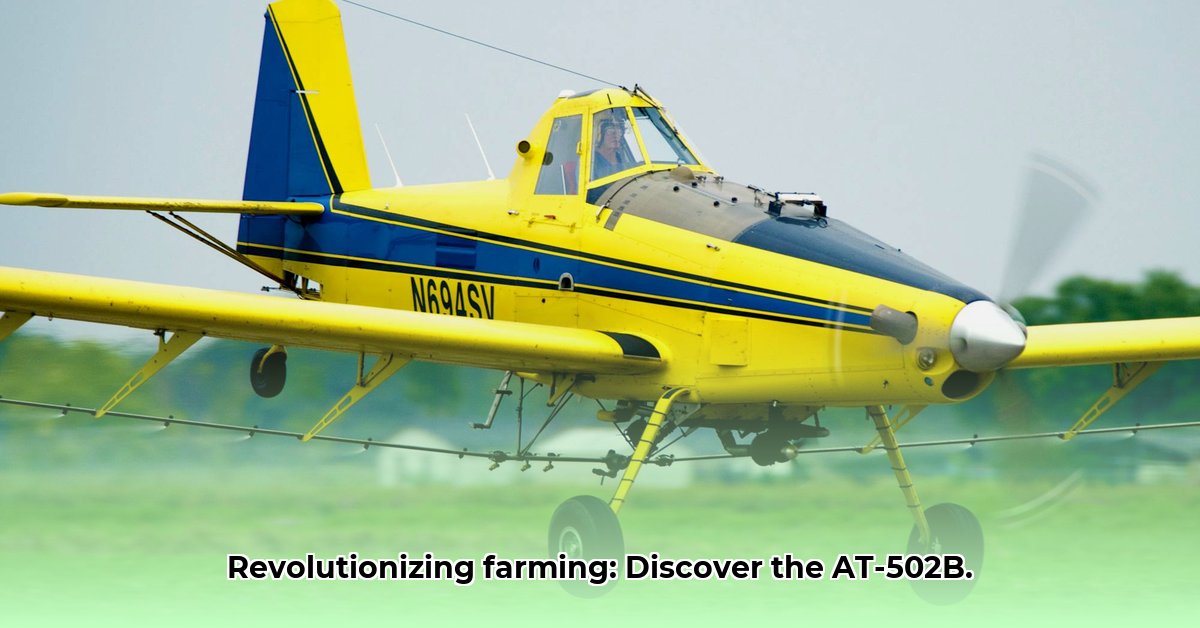
The Air Tractor AT-502B isn't your average airplane; it's a high-capacity workhorse revolutionizing modern agriculture. This powerful machine significantly boosts productivity while striving for a more sustainable approach to farming. Let's explore how this impressive aircraft contributes to a greener and more efficient future for agriculture. For comparison, consider the capabilities of smaller, ground-based equipment like a smaller tractor.
Power and Payload: Impressive Capabilities
Imagine needing to treat hundreds of acres of crops within a tight timeframe. The AT-502B’s 500-gallon capacity is a game-changer, dramatically reducing the number of trips required compared to smaller aircraft. This translates to substantial cost savings and increased efficiency. Fewer trips also mean significantly less fuel consumed, benefiting both the farmer's bottom line and the environment. Isn't this a perfect example of sustainable agriculture – achieving more with less?
A Day in the Life of an AT-502B Pilot: Precision and Efficiency
Let's shadow pilot Sarah on a typical day. Sunrise paints the eastern sky as she prepares her AT-502B for crop dusting over a vast wheat field. The powerful engine roars to life, a comforting sound marking the beginning of another productive day. Sarah isn't simply flying; she's conducting a precise aerial ballet, carefully navigating rows while applying crop treatment with pinpoint accuracy. Every drop counts, minimizing waste and maximizing treatment effectiveness, all thanks to the AT-502B's exceptional maneuverability. As the sun sets, Sarah completes her day, knowing her work has ensured a healthy harvest with minimal environmental impact. This is efficient and sustainable farming at its finest. How many acres can she treat in a single day compared to ground-based methods?
Environmental Responsibility: Minimizing Impact, Maximizing Yield
While the AT-502B significantly boosts efficiency by reducing fuel consumption per acre, it's crucial to acknowledge that it isn't a perfect environmental solution. The types and quantities of chemicals used remain a key discussion point in sustainable agriculture. A holistic approach extends beyond efficient application, necessitating a reduction in chemical dependency, exploration of environmentally friendly alternatives, and ongoing refinement of precision application technologies. Active research focuses on reducing reliance on traditional chemicals, proving a commitment to ecological responsibility. What are the leading research initiatives exploring alternative crop treatments?
Precision Application: Technology's Role in Sustainable Farming
Technology integration is paramount. GPS guidance and variable rate application systems are becoming increasingly vital. These systems, when used in conjunction with the AT-502B, enable highly targeted spraying. This results in less overall chemical use, minimizing waste and reducing the environmental footprint. The future of sustainable aerial application relies heavily on this synergy between advanced technology and powerful, efficient equipment. It's not just about the aircraft itself, but about the intelligent integrated system that makes the entire process efficient and environmentally conscious. What percentage of chemical waste reduction is achievable through precision application?
The Economic Equation: Weighing Costs and Benefits
The initial investment in an AT-502B is substantial. However, the long-term economic benefits are often compelling. The savings associated with reduced fuel consumption, increased acreage coverage, and minimized labor costs frequently provide a strong return on investment over time. This is especially true when considering the potential for increased yields and higher market prices for crops due to efficient and effective crop management. Some experts suggest the efficiency gains quickly outweigh the initial costs, depending on the specific farming operation. What are the typical ROI timelines for AT-502B investments in various agricultural settings?
Challenges and Opportunities: Navigating the Road Ahead
Despite its advantages, hurdles remain. Fuel efficiency is an ongoing area of research and development. The exploration and development of alternative fuels, such as biofuels, are crucial for the long-term environmental sustainability of aerial agriculture. Regulatory compliance varies across regions, complicating matters for farmers and operators. Yet, this also presents opportunities. The development of hybrid or fully electric aircraft is underway, promising to drastically reduce the carbon footprint of aerial applications. Further advancements in smart technologies that optimize flight paths and chemical use will likewise reshape the industry. What innovative fuel solutions are currently under development for agricultural aviation?
A Sustainable Future: The AT-502B's Role in a Greener Tomorrow
The AT-502B represents a major advancement in sustainable agriculture. While offering remarkable efficiency and power, its effectiveness is amplified when coupled with environmentally conscious practices. The future of sustainable farming relies on integrating powerful tools like the AT-502B with continuously evolving technologies and responsible strategies. It's about achieving the ideal balance between optimizing yields and protecting our environment. Ultimately, it's a collaborative endeavor – involving farmers, pilots, researchers, and technology developers – working together to create a greener and more prosperous agricultural future. How can farmers best leverage the AT-502B to minimize their environmental footprint?